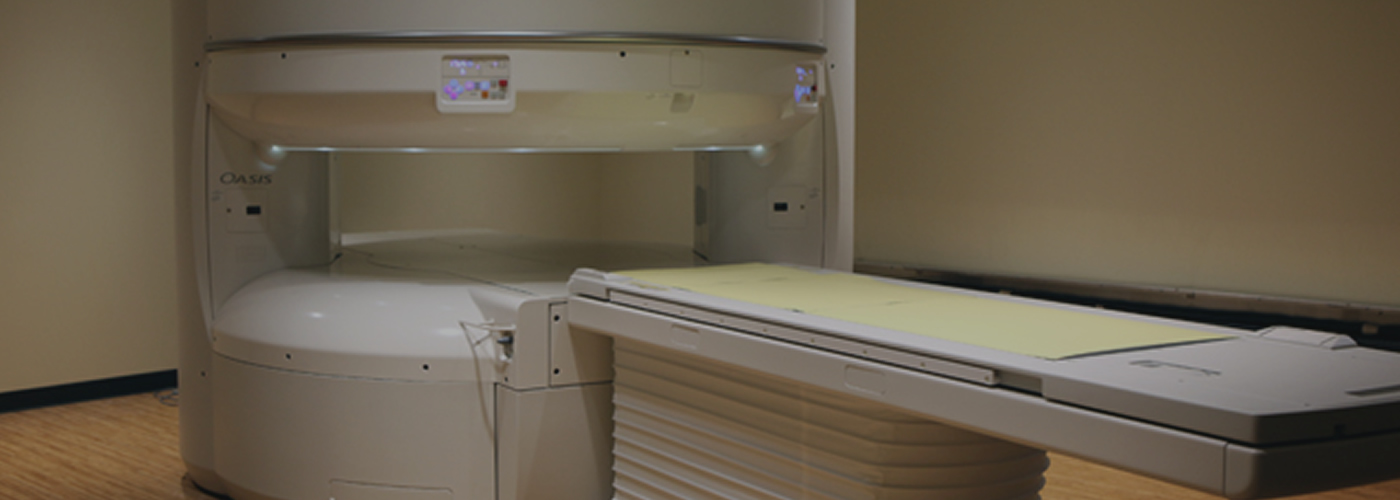| Categories: MRI Machine | Author: Resonant Healthcare Imaging Solutions | 0

For patients who suffer from claustrophobia or anxiety, spending 30 minutes or more inside the narrow tube of a closed-bore MRI system is a terrifying prospect. Fortunately, open MRI systems use magnets that do not completely surround the patient, which can significantly reduce anxiety, increase overall comfort, and make MRI technology accessible for larger patients.
Although open MRI systems provide more space and alleviate fears about enclosed areas, there are some compromises, including image quality, speed, and usage limitations. If your facility is considering an open MRI system, understanding the ins and outs can help you to make the right decision for your patients and your MRI service line.
Open MRI systems typically have two horizontal, flat, magnetic discs that do not completely surround a patient’s body, leaving open space on two or three sides. The magnetic discs located above and beneath the patient create a magnetic field that works the same way as the magnetic field in a closed MRI system.
Typically, open MRI systems have a field strength of 0.3 to 0.7 Tesla (T), but some open MRI systems have a field strength of up to 1.2 T. In comparison, closed high-field MRI systems can have a field strength of 1.5 T to 3.0 T. As such, open MRI systems typically fall into the low-field category, meaning that they are less powerful than closed high-field MRI systems. However, they can be a good choice for some facilities. Why?
1. They reduce patient claustrophobia and anxiety.
It’s understandable that many patients dread getting an MRI in a closed-bore system. Even if a patient does not suffer from claustrophobia, it can be difficult to spend a long period of time in a tightly enclosed space, particularly without being able to move.
Open MRI systems can help reduce patient anxiety, because they are open on two or three sides. When patients are more comfortable, they are more likely to remain still, which reduces the risk of blurred MRI images. If a patient must have a longer-lasting study, an open MRI also can eliminate the need for anesthesia or sedation.
2. They can accommodate larger patients and offer better patient access.
Open MRI systems can comfortably accommodate larger patients and provide better patient access for interventional MRI procedures. Open MRI systems can also be used to perform motion studies of joints and offer greater flexibility for patient positioning.
Additionally, open MRI systems are available in several different configurations. This gives facilities the ability to select the footprint that best fits their physical space and the needs of their patients.
3. They can be used for most routine scan types.
The lower power of open MRI systems is typically sufficient to perform a variety of routine scans, including musculoskeletal exams and large area studies. This makes them a good option for certain in-office orthopaedic imaging centers.
4. They are cost-effective.
As open MRI systems generally fall in the low-field category, they typically cost less to acquire than more powerful high-field MRI systems. Many open MRI systems use permanent magnets and do not require liquid helium, which results in lower operating and maintenance costs.
Although open MRI systems provide more space and comfort for patients, they have some factors that need to be considered, such as:
1. They produce lower-quality images than high-field magnets.
Open MRI systems produce images that are less clear and less detailed than high-field MRI systems. If the open MRI does not produce images that are sufficiently clear, a patient may have to have a repeat scan on a high-field MRI system before receiving a diagnosis. However, having a MRI specialist who can help improve image quality can greatly minimize risk of getting scans that are not diagnostic.
Further, while it is certainly possible to obtain MRI accreditation with an open MRI system, it may be more difficult to meet the image quality requirements specified by the MRI accreditation organization. Hiring a MRI specialist who specializes in optimizing open MRI system protocols and scans can help ensure your magnet gets accredited.
2. They have usage limitations compared to high-field magnets.
Due to their lower image quality, open MRI systems do not provide sufficient detail and clarity for certain types of small area or deep tissue scans. If your facility is performing routine scans, such as musculoskeletal scans, in an in-office imaging center though, an open MRI could be perfectly suitable for your facility’s needs.
3. They are slower than high-field magnets.
Open MRI systems are typically low-field systems that have longer scan times and, therefore, can accommodate fewer patients in a day than their high-field counterparts. Although longer scan times typically mean a higher likelihood of blurred images due to patient movement, blurred images may not be as much of an issue with low-field open MRI systems. Patients who are more comfortable tend to move around less.
An open MRI system is a good choice for facilities that are looking for an accessible, comfortable MRI system that can perform most routine scans. Although patient comfort and accessibility are important considerations, facilities should ensure that an open MRI system also will meet the needs for image quality, usage, and speed. Working with a third-party MRI acquisition consultant will allow your facility to understand a variety of MRI systems to find the best fit for your existing service line, budget, and future plans.
For more information on MRI acquisition or types of MRI systems or to speak with a Resonant MRI expert, call 877.938.5665 or contact us. We’re here to help.
Be the first to leave a comment.